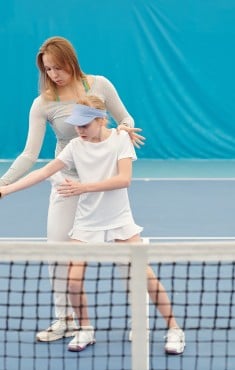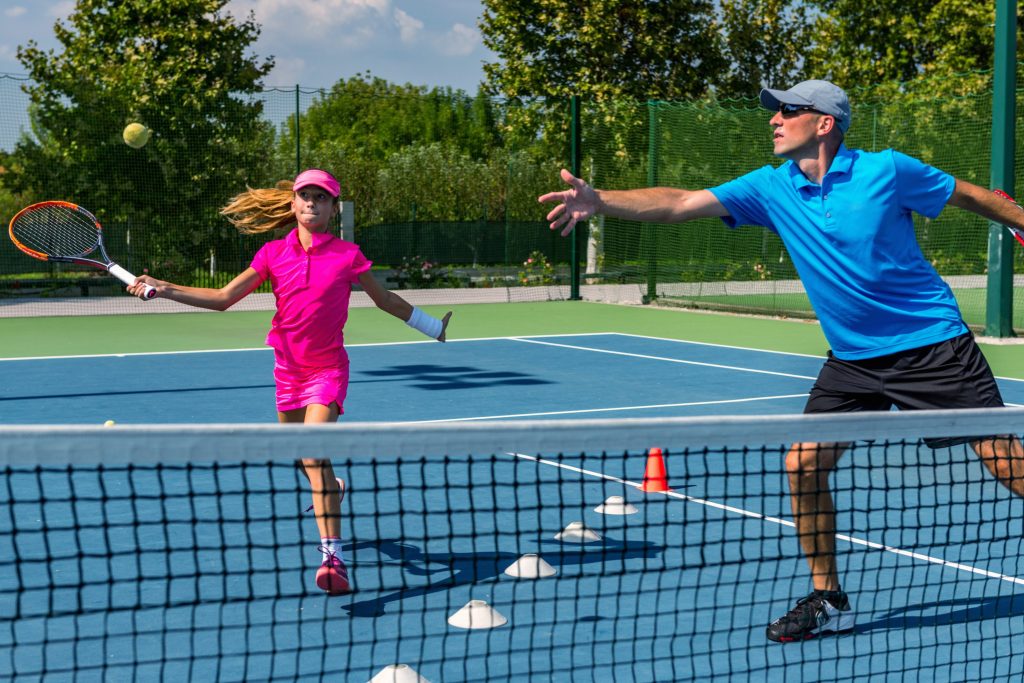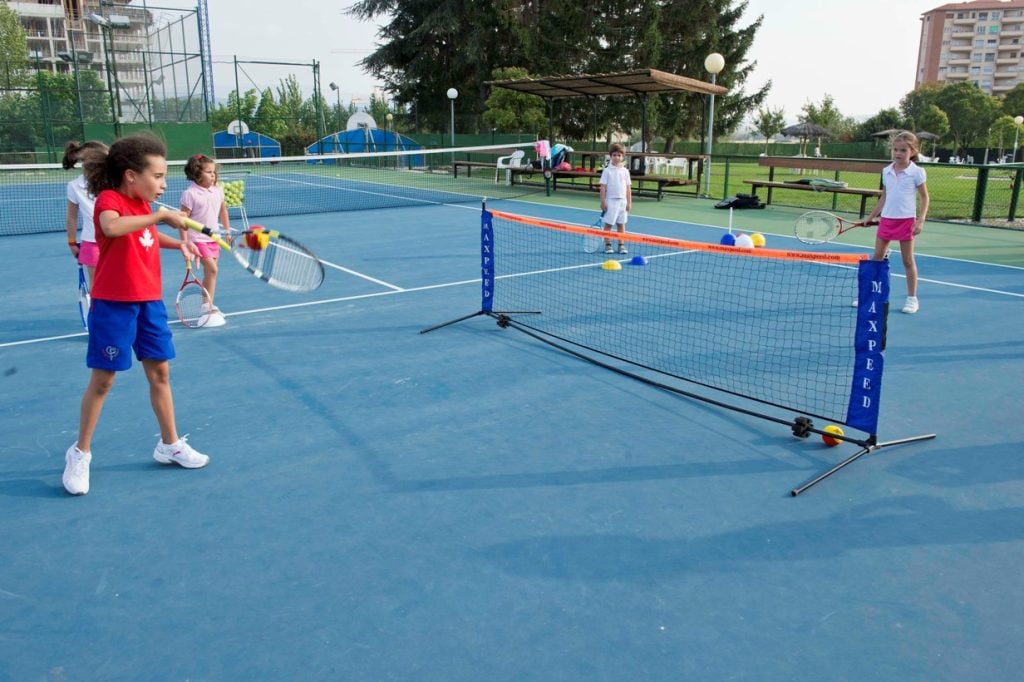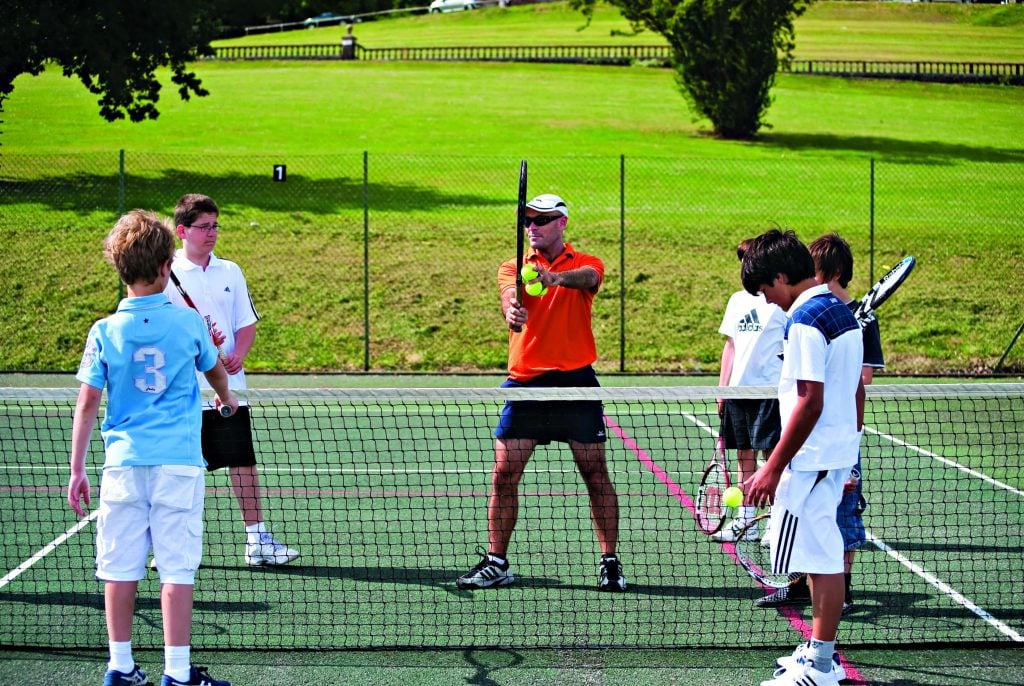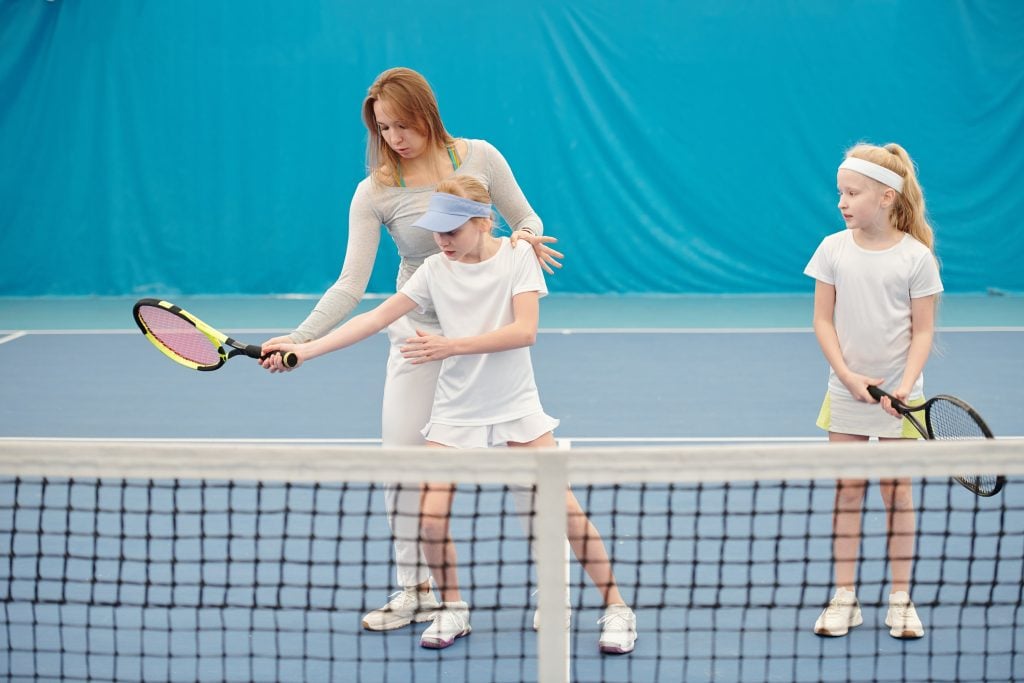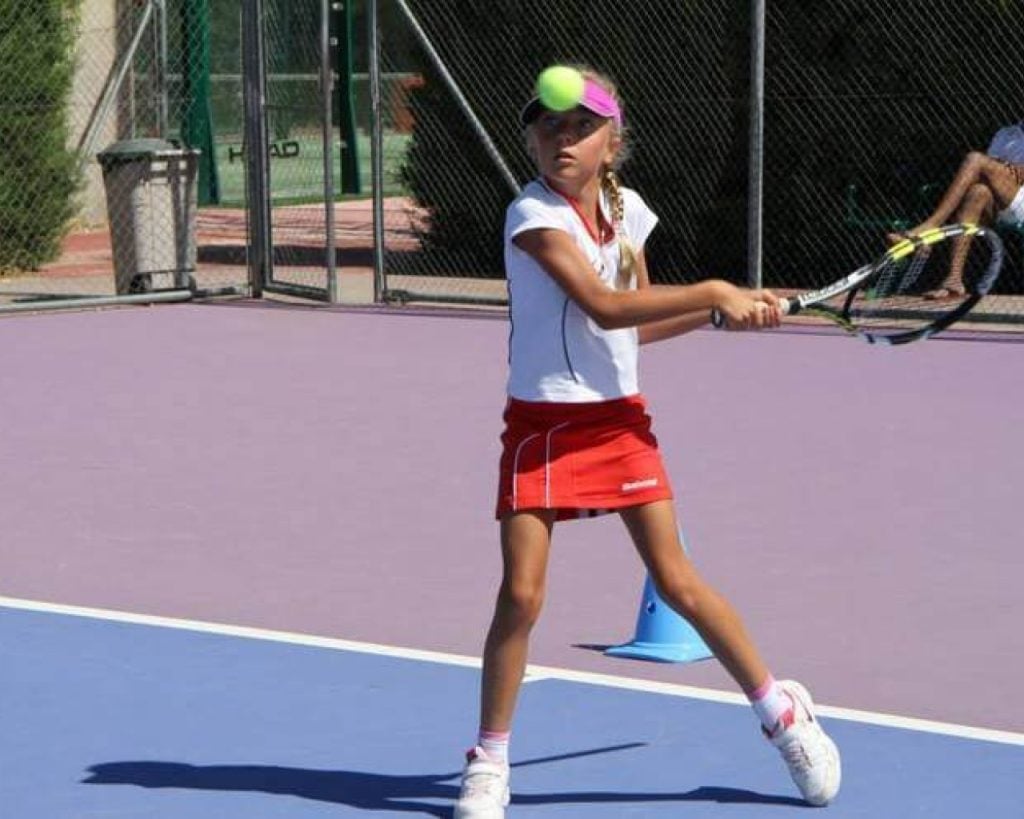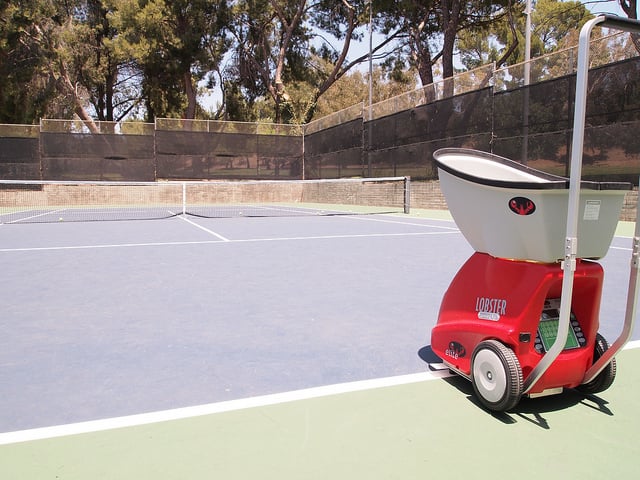Table of Contents
The problem is that many parents don’t know where to start. What type of exercises are best for each age group? How to make tennis more of a game than a chore? Which racquets or balls are the most recommended?
In this guide, you will find tennis exercises for children organized by level, from beginner to advanced, as well as recommendations for equipment adapted to each stage.
With these tips, your child will be able to learn effectively and, most importantly, enjoy the process!
what are the benefits of tennis for children?
Tennis is not only a fun sport, but it also helps in the physical, mental and emotional development of children.
This activity improves coordination, promotes discipline and strengthens reaction capacity. In addition, being an individual sport, it teaches children to trust themselves and develop autonomy on the court.
Among the main benefits of tennis for children, the following stand out:
- Physical development: Improves coordination, speed and endurance.
- Mental benefits: Helps children concentrate, make quick decisions and handle pressure.
- Promotion of values: It teaches discipline, perseverance and respect for opponents.
- Socialization: Although it is an individual sport, it promotes interaction with other children and teamwork during training sessions.
In addition, tennis can be practiced at any age and adapted to different levels, allowing children to progress without feeling overwhelmed.
how to teach tennis to children effectively?
For children to enjoy tennis and progress without frustration, it is key to use teaching methods adapted to their age.
One of the most effective systems is the Play & Stay method, used in many tennis academies to facilitate learning. This method adjusts the size of the court, the height of the net and the pressure of the balls according to the child’s age.
why does this approach work?
- Children start with slower balls, which facilitates control.
- Lighter racquets adapted to their size are used.
- They play on smaller courts, which allows for longer points and more fun.
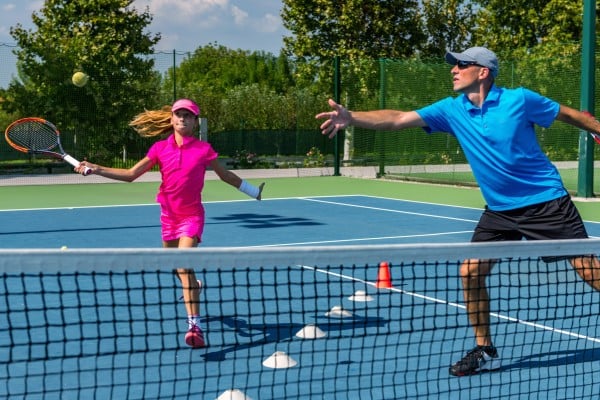
Advice for parents: In the first training sessions, prioritize fun over technique. Children learn best when they play and enjoy the activity.
Tennis drills for children according to their level
Each child learns at his or her own pace, so it is important to adapt the drills to his or her skill level. Below, we will explain beginner, intermediate and advanced tennis drills designed to improve technique, coordination and ball control.
Beginner level (5-8 years old)
At this stage, the goal is for children to become familiar with the racquet, the ball and the court without feeling pressured. The most important thing is that they gain confidence and enjoy the game.
Advice for parents
In the first training sessions, prioritize fun over technique. Children learn best when they play and enjoy the activity.
Recommended exercises:
- High Five: A simple drill where the child learns to handle the racquet by hitting the coach’s hand before starting to receive balls.
- The circle: They stand in a circle while the coach throws balls at them. They must wait for the ball to bounce before returning it with the racquet.
- Pac-man: A game without a racquet where children run along the lines of the court while a “Pac-man” tries to catch them. Improves agility and speed.
Intermediate level (8-12 years)
Here, children already have control over the racquet and ball, but need to improve the accuracy of their strokes and learn to move strategically on the court.
Advice for parents
At this level, children can start practicing the main tennis strokes, such as the forehand and backhand.
Recommended exercises:
- The triangle: three points are marked on the court, and each player must move to one of them before hitting the ball. This exercise improves positioning and decision making.
- Agility game or frying pan: Each child bounces the ball on his racquet while walking around the court. If he drops it, he must start over. Develops coordination and racquet control.
- Bouncing the ball: Similar to the previous exercise, but in this case they must run a distance while bouncing the ball and go around a cone before returning.
Advanced level (12 years and older)
Children with more experience in tennis should focus on the speed, power and accuracy of their strokes. In addition, it is essential that they practice game strategy.
Advice for parents
If your child has reached this level and wants to continue advancing, consider enrolling him or her in a tennis camp, where he or she can train with professionals and compete with players at the same level.
Recommended exercises:
- Speed drills with coordination ladder: a ladder is placed on the floor and the player must move quickly between the spaces without stepping on the lines.
- Shooting at targets (plastic bottles or cones): Bottles or cones are placed on the court and the player must try to knock them down with his shots. It helps to improve accuracy.
- Mini matches and competition training: At this stage, it is important that children play real points to put into practice everything they have learned.
Recommended tennis equipment for children
Choosing the right equipment is key for children to enjoy tennis without getting frustrated. If the racquet is too big or the ball too fast, learning to play can become complicated.
Therefore, it is important to adapt the equipment to the age and level of the player.
Racquets for children: how to choose the best one?
Children’s rackets are lighter and smaller than those for adults, which makes it easier to grip and control the ball. The recommended length varies according to the child’s age:
- 5-7 years: 43-53 cm rackets.
- 7-9 years: Rackets from 53 to 58 cm.
- 9-12 years: 63 cm rackets.
There is no need to buy a professional racquet from the beginning. There are inexpensive aluminum options that are ideal for the little ones.
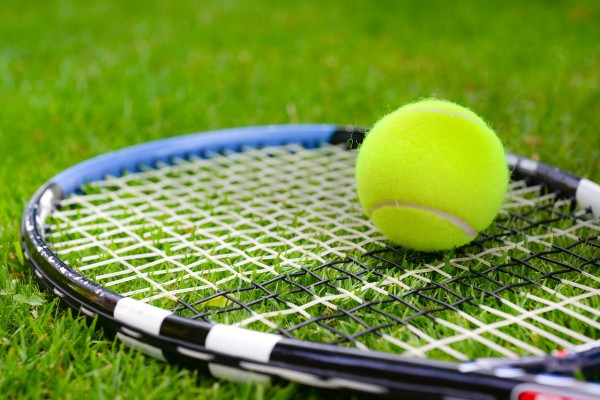
Tennis balls: which option is best for children?
Not all tennis balls are the same. For children, low-pressure balls are recommended, as they are slower and allow for more controlled strokes.
To give you a clearer idea, these are the types of balls according to age and level:
- Red balls: 75% less pressure than normal balls. Perfect for children from 5 to 7 years old.
- Orange balls: 50% less pressure. Ideal for 7 to 9 years old.
- Green balls: 25% less pressure. Recommended for children over 9 years old.
Exercises with tennis balls for children should be adjusted to their level so that they can improve without feeling frustrated.
For example, beginners can start with red balls to practice strokes without worrying about speed.
Courts and nets adapted for mini-tennis
For children to play more comfortably, courts and nets are also adapted to their age. These are the recommended sizes for children:
- Mini court: 12.8 m long x 8.23 m wide.
- Net height: Between 70 and 90 cm, depending on the player’s age.
Clubs and academies usually have these adaptations, but if you want to practice at home, there are portable nets and detachable lines to mark a court on any surface.
how can tennis camps and academies help?
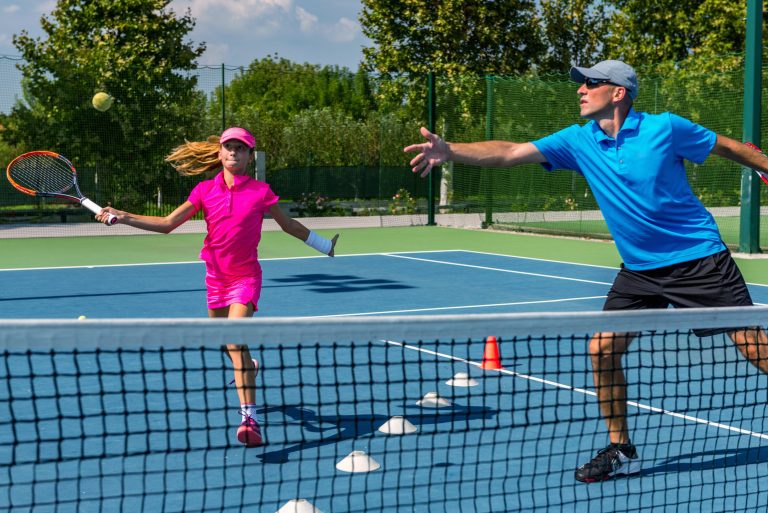
While kids can learn tennis with drills at home or at the local club, attending a tennis camp or tennis academy can make a difference in their development.
These environments offer more structured training. They also provide opportunities to compete, improve technique and develop tactical skills in a motivating environment.
Here are the main differences and benefits of these programs:
Differences between training at home and at an academy or camp
- At home or at a local club: More flexible learning, but less opportunity to compete and improve quickly.
- At an academy or camp: Intensive training with professional coaches, access to high-level facilities and the chance to play with kids of different levels.
Benefits of tennis camps
- Training with professionals: Children receive sessions designed to improve their technique and game strategy.
- Increased motivation: Training with other kids who share the same passion encourages learning and healthy competition.
- Growth environment: Camps not only teach tennis, but also values such as effort, discipline and teamwork.
If your child enjoys tennis and wants to improve their skills, attending a tennis camp can be an unforgettable experience that will help them take the next step in their athletic development.
Make tennis a fun and motivating experience with Ertheo
Tennis is a sport that brings multiple benefits, but for children to really enjoy it, it is important to adapt their learning to their age and level. With the right tennis drills for kids and the right equipment, any child can improve their game without frustration.
If your child already shows an interest in tennis and wants to take their training to the next level, Ertheo offers programs designed to help young players improve their technique and enjoy the learning process, whether it’s through specialized sessions at a tennis academy or an intensive tennis camp experience, our programs are designed to help children grow as athletes and, above all, enjoy the game.

